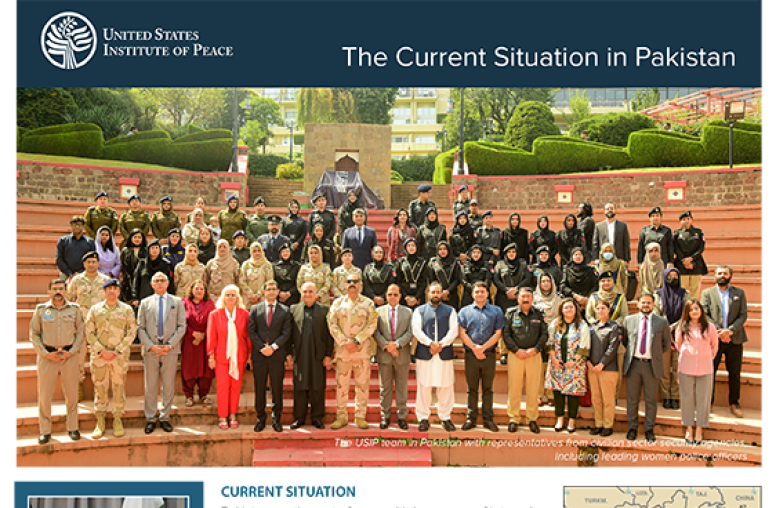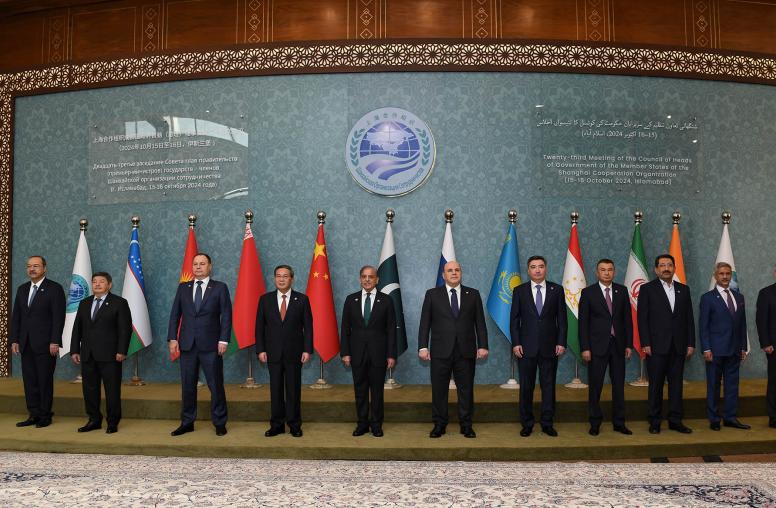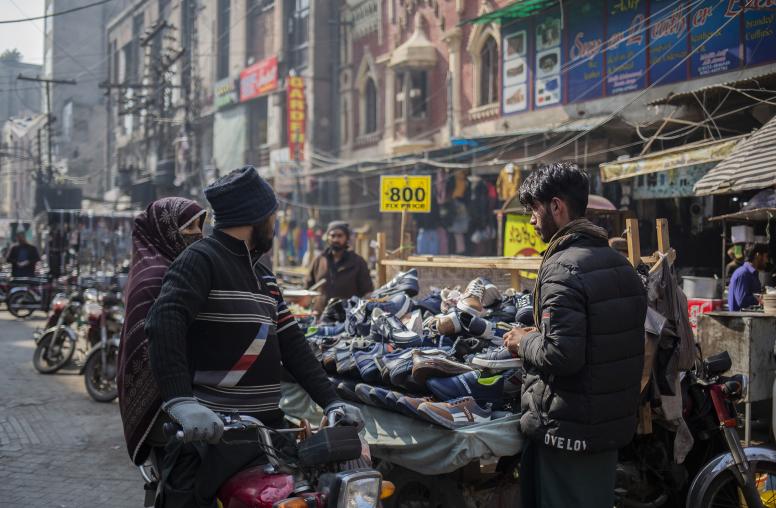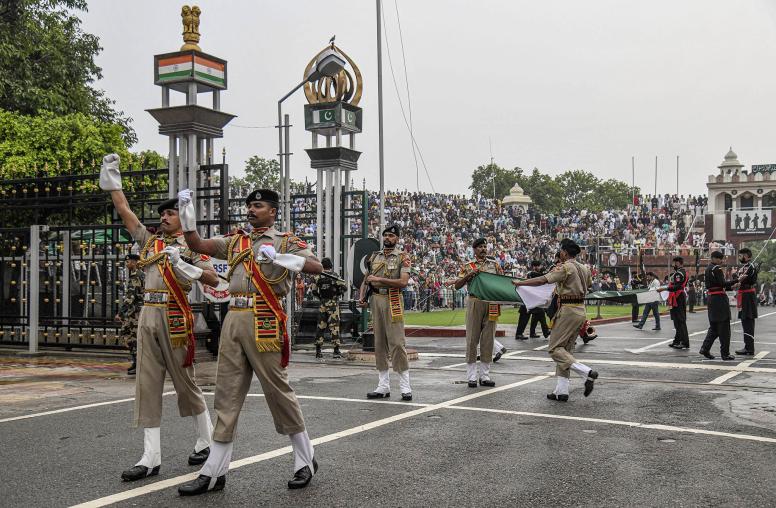What’s at Stake in Pakistan’s Summer Elections?
Understanding Islamabad’s internal political processes is critical for crafting policy on the security challenges it poses.
Later this summer, millions of Pakistani voters will have the opportunity to cast ballots to elect new representatives for the national parliament and provincial assemblies. Pakistan’s political landscape is fractious and has faced major upheavals in the year running up to the vote, leaving considerable uncertainty about the possible outcomes. The country’s frequent constitutional upheavals and experience of military coups has meant that the rules of political competition are not firmly settled and are subject to regular change.

In the decade since the end of military rule under former Chief of Army Staff and President Pervez Musharraf, the Pakistani military has shifted to less visible forms of influence and background pressure, but remains a dominant force with significant autonomy from civilian control. As in previous periods in Pakistani history, the military’s role has also been embraced by some political players who see partnership with the army as a means of edging out their rivals. Domestically, whichever party or coalition of parties takes office after the polls will face serious economic challenges, including the provision of job opportunities for a growing population, the management of a chronically struggling energy sector, and deteriorating exports and foreign exchange reserves.
In Washington, Pakistan is principally viewed by U.S. policymakers through the lens of the security challenges posed by its nuclear arsenal, counterterrorism threats, and conflicts with neighboring India and Afghanistan. While Pakistani electoral outcomes are not necessarily the principal determinant of the country’s policies on the security front, understanding Pakistan’s internal political processes should remain important for the U.S. and other partners seeking to effectively craft policy on these and other issues. This piece, adapted from a recent larger paper and electoral dataset analyzing the pre-election environment, attempts to analyze some of the major trends and factors that might shape the elections and their outcome.
Can the PML-N Return for a Second Term?
To date, no national Pakistani government has won re-election to a second term, but the outgoing government is also only the second to be elected under a period of civilian rule to complete a full five-year term in office. The Pakistan Muslim League-Nawaz (PML-N) party came into office in 2013 with a solid ruling majority in the National Assembly and in the country’s most populous province of Punjab. But like the Pakistan Peoples’ Party (PPP) government that preceded it, the PML-N’s prime minister was disqualified from holding office by the Supreme Court of Pakistan before finishing out his term, after Mian Mohammad Nawaz Sharif and several members of his family were caught up in corruption scandals linked to the disclosure of overseas business assets first detailed in the “Panama Papers” leaks of April 2016. Nawaz was subsequently barred by the Supreme Court of Pakistan from holding any party offices, forcing a partial leadership transition to his brother, Punjab Chief Minister Shehbaz Sharif.
While the PML-N might theoretically enjoy the benefit of incumbency and can claim credit in its campaigning for some significant development achievements, this has been undercut by the judiciary’s disqualification of Nawaz and the challenge of maintaining party unity in the wake of his loss of office. Throughout its tenure the PML-N has faced street protests and legal challenges from the Pakistan Tehreek-e-Insaf (PTI), which has emerged as the dominant national opposition party despite coming short in the last elections in 2013. Although the PML-N weathered Nawaz’s initial disqualification from office in April 2017 without major withdrawals, during the final months of the outgoing government defections of current and former lawmakers to the PTI appear to have accelerated, particularly in Punjab, which could presage a broader collapse of support.
Structure of the Electoral System
The regionalization of politics in Pakistan was apparent in the 2013 election results; of the 125 National Assembly seats directly won by the PML-N, only six were outside Punjab or Islamabad; the PPP won only two seats outside of Sindh. While Pakistan’s major national political parties have sought to recruit supporters from around the country, in many respects the parties have become increasingly polarized and rooted in their respective provincial bases of support.
At the local constituency level, there is also a considerable degree of vote fragmentation and multi-partisanship (despite Pakistan’s use of the single-member “first-past-the-post” electoral system), which can produce unexpected results or coordination failures among opposition voters in narrowly close or highly divided outcomes. Although the PML-N was able to form a government in 2013 on the strength of its performance in Punjab, the fragmentation in the system means that parties are often only able come together to form (dynamic and often unstable) ruling coalitions at the national level after polls are held, further encouraging interest groups and candidates to shift their alliances before and after the fact, and defect regularly rather than embrace strong national party brands.
Pakistan’s first national census in nearly 20 years was carried out in 2017, the provisional figures from which were used to re-draw constituency boundaries, which will further reshape the structure of the upcoming contest and prevent easy comparison to the most recent elections before it. Finalized constituency boundaries were announced by the Election Commission of Pakistan (ECP) in early May; however, in the final week of the outgoing government’s term, the Islamabad and Balochistan high courts issued rulings overturning ECP delimitation plans in several districts, and ordering it to draw new boundaries there. The ultimate outcome of these and other outstanding complaints is still unresolved, but any decision has the potential to upset preparations for the vote and—depending on the new composition of the constituencies—alter the outcomes in some races.
Questions to Watch
Attempting to forecast the result of the elections is immensely difficult. Public opinion polling data in Pakistan is limited, constituency-level voting data from past elections are rarely made available beyond aggregate totals, and Pakistan’s history of electoral manipulation by both military and civilian governments means determinative interventions and mobilizations can often be carried out beyond the reach of open source reporting or analysis.
Beyond the unresolved status of the constituencies, still ongoing negotiations within and between the parties over the choice of candidate nominations and electoral alliances, and other pending legal cases that could potentially throw off the election timeline, there are many unknown elements at this stage. That said, some key questions during the upcoming campaign period and in assessing the outcome of the elections will include:
- The degree to which the PML-N coalition holds together, particularly in Punjab, despite the party’s legal battles, leadership transitions, and efforts by the PTI to chip away through the recruitment of defectors, and whether the party’s economic development record is sufficient to maintain support and reverse previous anti-incumbency trends;
- Whether the PTI is successful at fully supplanting the PPP as the leading national opposition party and forcing the PML-N into a two-party contest in most constituencies, or whether third and fourth-place candidates also split the vote in many races;
- In the case of a highly fragmented outcome either locally or nationally, which smaller parties emerge as swing blocs, and how they choose to leverage their position in negotiations over the formation of new provincial or national governing coalitions;
- The degree to which the administration and adjudication of the elections by the ECP, the caretaker government, and the increasingly activist judiciary is accepted by the main competing parties; and
- How the next government engages with the non-elected power centers within the country—including the military, judiciary, and militant and non-militant organizations and movements—and how the composition of the next ruling coalition affects its positions, policies, and priorities on the key issues facing the country, especially the management of the economy, of security relations with neighboring countries and the United States, and of questions regarding the evolving rules and institutions governing Pakistan’s political system.
For Pakistani voters and political elites, the 2018 general elections are a significant milestone and a potential point of reconfiguration for the domestic balance of power. Understanding the election outcome will be crucial to mapping out the future trajectory of Pakistan.



